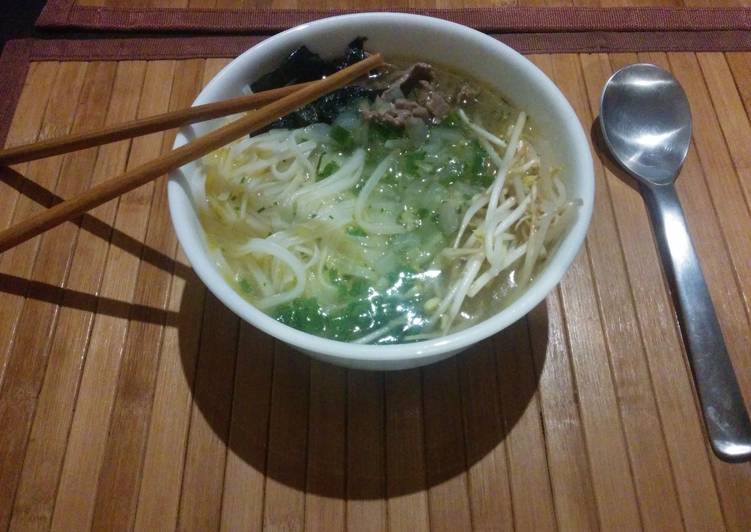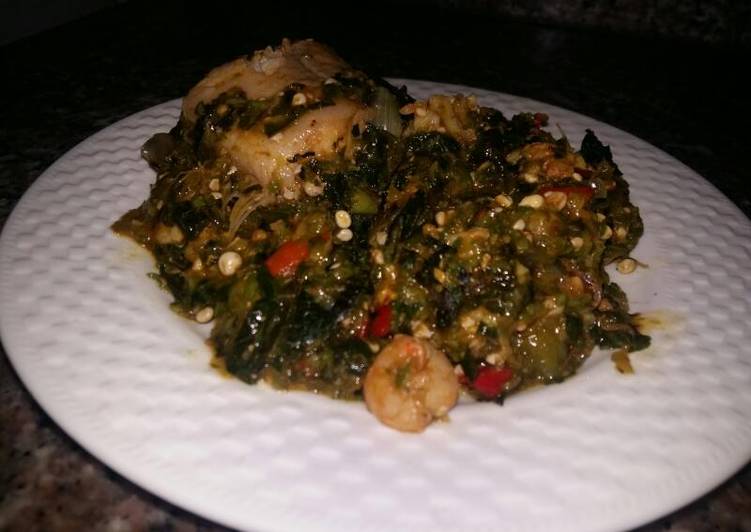
Hello everybody, it is Drew, welcome to my recipe site. Today, I will show you a way to prepare a special dish, traditional japanese ramen (with beef). It is one of my favorites. For mine, I’m gonna make it a little bit tasty. This will be really delicious.
Traditional Japanese Ramen (with beef) is one of the most popular of recent trending meals in the world. It is easy, it’s quick, it tastes delicious. It is appreciated by millions daily. They’re nice and they look wonderful. Traditional Japanese Ramen (with beef) is something that I have loved my whole life.
Ramen is a Japanese soup, by way of Chinese noodles, that has become an American obsession. Ramen (/ˈrɑːmən/) (拉麺, ラーメン, rāmen, Japanese pronunciation: [ɾaꜜːmeɴ]) (literally: "pulled noodles") is a Japanese noodle soup. Read this Japanese Ramen Guide to test your knowledge.
To begin with this recipe, we have to first prepare a few components. You can have traditional japanese ramen (with beef) using 16 ingredients and 7 steps. Here is how you cook it.
The ingredients needed to make Traditional Japanese Ramen (with beef):
- Get broth
- Make ready chicken broth
- Make ready ginger, finely chopped
- Make ready red pepper, finely chopped (optional, if you like spicy)
- Take chives, finely chopped
- Get soy sauce
- Take sesame oil
- Get garlic cloves, finely chopped
- Get Hondashi soup stock
- Make ready scallion tails (finely chopped)
- Take dish
- Make ready Rice ramen
- Make ready scallions (just the tails), finely chopped
- Prepare Nori (sushi seaweed) cut in small strips (1x3cm)
- Get thin beef steaks, cut in small pieces
- Take bean sprouts
Gather the pans/pots that you're going to use and everything else. Although Japan does have a hefty selection of pre-packaged, dried ramen ready for boiling water and a seasoning The most common way to serve ramen is with a slice of pork. Other options include a soft-boiled egg or fish paste/cake. If traditional Japanese ramen is what you're after, you'll need to head over to my mother's website RecipeTin Japan.
Steps to make Traditional Japanese Ramen (with beef):
- Prepare all ingredients (chop, cut, etc.)
- Start boiling the chicken broth.
- Meanwhile, heat a pan with the sesame oil, and start cooking the garlic for 1 minute (until golden.) Then add to the pan the soy sauce, 2tbsp of the scallion tails, the chopped chives, the ginger and the red pepper. Cook for ~2 minutes. This will your ramen broth seasoning.
- Pour into the boiling chicken broth the ramen seasoning that you cooked in step 3. Also add the Hondashi soup stock. Keep boiling and stirring the broth for 10 more minutes.
- Meanwhile put the rice ramen in plain boiling water. It will take about 3 or 4 minutes to cook. It should be "al dente." Once cooked, rinse it with cold water to stop the cooking process.
- Prepare the plate: In a deep soup plate put some rice ramen, some 1 tbsp of the remaining scallions, some bean sprouts, 1/4 of the beef and some Nori leave pieces. TIP: try to accommodate these ingredients in the same way for all plates: just looks nice… :)
- Just before serving, pour the prepared broth to fill the plate to serve. Enjoy!
She's shared Japanese Ramen Noodles with the broth made from scratch, and quick and easy traditional ramen using sort-of instant ramen. Serve ramen with chili oil, sesame oil, and shichimi togarashi. Keep unpeeled eggs covered in cool Made this last week and making it again tomorrow. So delicious and the closest thing we've had to true Japanese ramen. It's a dish that demands an element of 'free styling' to really master and isn't something you just I recently started making ramen with my pasta roller and was pleasantly surprised how easy it is to make standard ramen noodles with the baked.
So that is going to wrap it up with this exceptional food traditional japanese ramen (with beef) recipe. Thanks so much for your time. I am sure you will make this at home. There is gonna be more interesting food in home recipes coming up. Remember to save this page on your browser, and share it to your loved ones, friends and colleague. Thanks again for reading. Go on get cooking!


